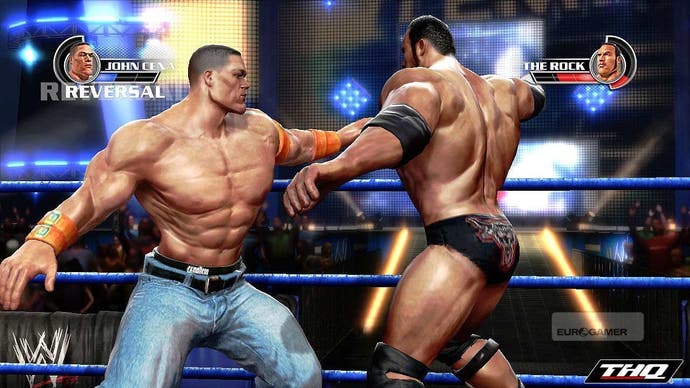Me and WWE
When Tom met Paul.
I'm about to meet The World's Largest Athlete.
Paul Wight is billed as 7' 1" tall and 485lbs. He suffers from a disease of the endocrine system known as acromegaly. An abnormality in his pituitary gland meant that in puberty he generated too much growth hormone and grew tall and broad, to put it mildly. Although he underwent an operation to limit the onset of the disease's life-shortening effects, Wight was well over six foot tall by the time most of us were pushing four.
Wight is my hero. As a former big man myself Wight is someone I've always identified with and adored, and I'm not alone. Like the rest of him, his heart is bigger than most. His performances transcend the boundaries of his art form.
Wight is a professional wrestler who works for World Wrestling Entertainment, the organisation once known as WWF. I first started watching wrestling when I was a kid. Thanks to shrewd marketing by the pseudo-sport's god-emperor Vince McMahon, my hero was Bret "Hitman" Hart (my sister fell for the blond-haired, leotard-wearing Mr Perfect). 20 years later I read Hart's autobiography and found it so fascinating I began watching again.
Most people's assumptions about WWE (the name change was down to a legal battle with the World Wildlife Fund – the pandas won) are that it's just oiled-up He-Men pretending to slap each other, then delivering monologues you or I would be unable to complete without bursting into laughter.

When I was a kid I believed wrestling was silly and fake, much as I loved it. (Perhaps that made it easier to make believe. I used to mock-wrestle pillows on the double bed in my parents' spare room, raising home-made championship belts aloft to an imaginary crowd while fake-grimacing under the exaggerated burden of the preceding light exercise.)
But there is a lot more to wrestling. As I returned to it after a significant hiatus and settled into its exhausting rhythm of non-televised "house shows", televised episodes (90 minutes each for WWE RAW and WWE SmackDown every week, excluding ad time) and pay-per-views (three hours, 13 times a year), I found myself drawn under the spell of three things that run throughout everything WWE does: the art of the wrestling itself, the storytelling, and what people in the business call "kayfabe".
The wrestling is exhausting. Top wrestlers are expected to perform in matches that can last as long as an hour several times per week, only breaking to travel, train, practice and make media and charity appearances. Wrestlers have to execute all their moves perfectly with barely a break or their bosses will stop relying on them, and it's backbreaking work: when you're next alone at home, try throwing yourself to the floor and getting back up every five seconds for half an hour and see how you do.
Mickey Rourke's 2008 film, The Wrestler, focuses on a fallen star working local circuits. It doesn't convey the sheer mental exhaustion the performers endure. For the WWE, you need to imagine the sequence where Mickey is sat in a broom cupboard planning a bout with his opponent and expand it by an order of magnitude.
In the old days you could whisper to one another about what you were going to do as you clinched at a corner turnbuckle. Nowadays there are cameras everywhere, so communication is limited.
Historically in wrestling, a few characters are "feuding" at any time. As well as a consistent narrative, it allows specific wrestlers to work together frequently, and these complementary relationships lead to more convincing bouts that demand less exertion and reduce the likelihood of injury. In recent years though, the storytelling behind the feuds has become nuanced, often drawing upon the histories of individuals.
Where the storylines are best, though, is when they encompass real-life animosities, because that's when kayfabe is at its most prominent and inventive.


